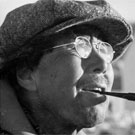Common menu bar links
Institutional links
Project Naming

photo collections
- Photographs from the North: Library and Archives Canada Collections
- Royal Canadian Mounted Police
- Geraldine Moodie photographs taken during the 1904-1905 Hudson Bay Expedition
- Department of Indian and Northern Affairs Canada
- National Film Board of Canada
- Department of National Health and Welfare
- Private Collections
Department of Indian and Northern Affairs
The Department of Indian and Northern Affairs Canada is descended from the Department of the Interior, one of the earliest federal government agencies mandated to administer northern affairs. In 1922, the Department of the Interior established the Northwest Territories and Yukon Branch. When the Department of the Interior dissolved in 1936, the Department of Indian Affairs, which also covered the Inuit, was made a branch of the Department of Mines and Resources in December of that year. An awareness of the growing need for social and other health care services in the North eventually led to the establishment of the Northern Administration and Lands Branch in 1951. By 1953, the Department of Northern Affairs and National Resources was created. In 1966 the Department of Indian Affairs and Northern Development (DIAND) was established, known today as Indian and Northern Affairs Canada.
Annual Arctic expeditions sponsored by the government have a long tradition dating back to the early part of the 20th century. Many of the explorers, engineers, scientists and medical staff taking part in these annual expeditions were also professional or amateur photographers. The DIAND collection of Arctic images includes photographs by Richard S. Finnie, an explorer, photographer, filmmaker, writer and lecturer; Lachlan T. Burwash, an exploratory engineer with the Department of the Interior; zoologist Joseph Dewey Soper; J.G. Wright, Superintendent of Eastern Arctic Patrol and National Film Board photographer; and S.J. Bailey, Regional Director of Family Allowances for the Yukon and Northwest Territories. Other individuals whose documentary photography of the Eastern Arctic is found in the DIAND collection include Dr. Leslie D. Livingstone, Major David L. McKeand, and Officer Alexander Stevenson.

Unidentified group of women and children and one white man
Kimmirut (formerly Lake Harbour), 1937
e002213402
Source







